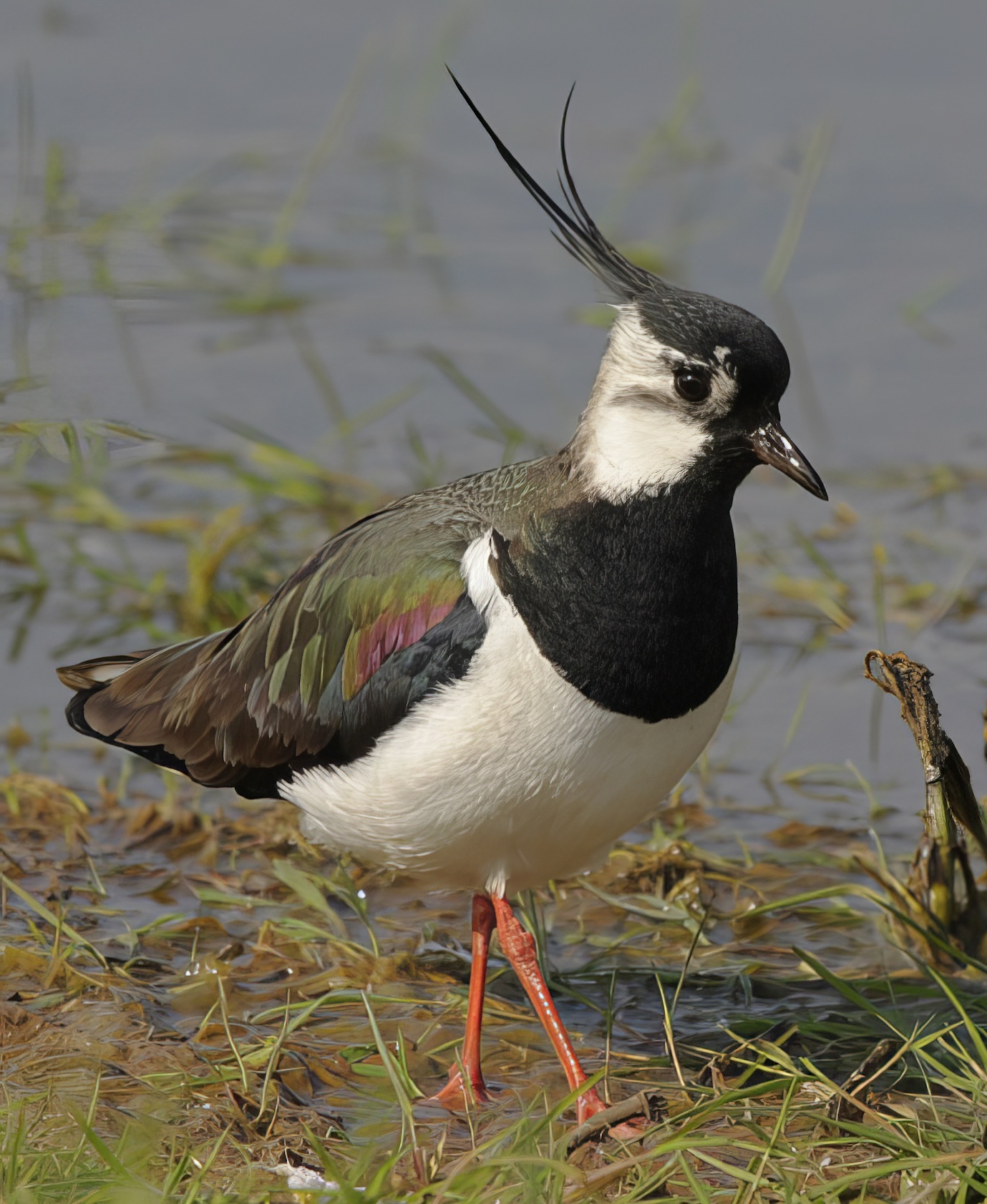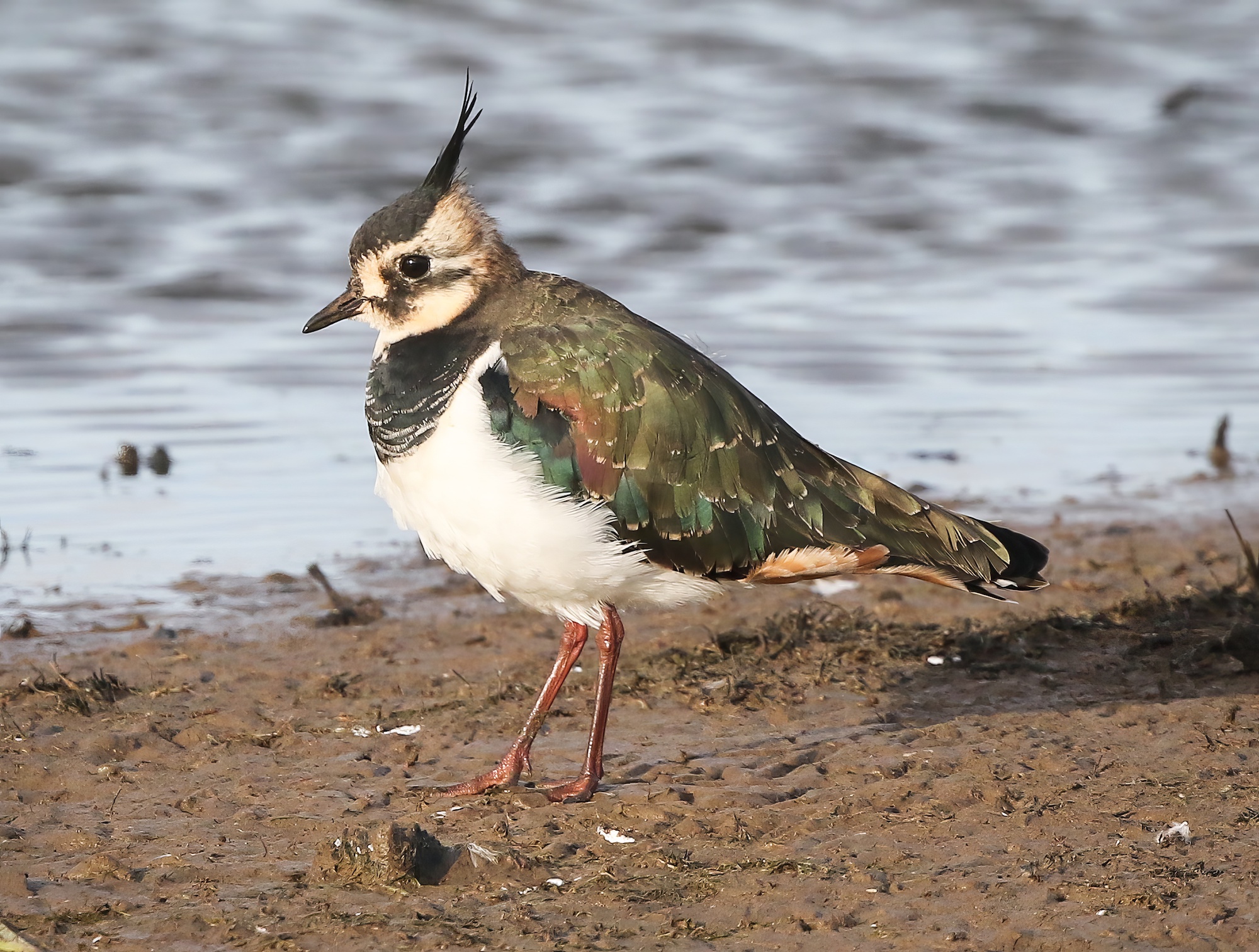Lapwing Vanellus vanellus
Common but declining breeding species, and very common passage migrant and winter visitor.


Lapwings at Frampton Marsh: left, May 19th 2010 (Neil Smith) and right, September 2nd 2019 (John Clarkson).
The Lapwing and its demonstrative display flight is the “archetypal” wader of the Lincolnshire countryside and the symbol of LWT. Sadly, our breeding population is in long term decline. The Atlas estimated 7,000 pairs in the late 1980s, but the population was thought to have halved between then and 1997. The Lincs BBS index shows there was a rebound up to 2009 followed by a further and greater decline. The APEP4 adjusted population estimate for 2016 was 2,400 pairs. One bright spot is that over the last 15 years DEFRA habitat improvement schemes have demonstrated across the county that grassland areas can recover their Lapwing populations if water levels are raised and sufficient wet muddy edges for young to feed are provided. The winter population in the 1980s was thought to be up to 1,300,000 birds, with widespread flocks of 1,000 to 5,000 birds. In recent years LBR reports, 2016-2020, winter peaks have been in January or December at the main sites on the Humber and The Wash. During this period combined peak totals usually topped 20,000 with internationally important counts (>6,200) regularly seen at Alkborough Flats, Frampton Marsh and Read's Island; five figure totals were recorded during 2016-2020 at both Frampton Marsh (17,310 December 2016; 14,500 February 2020) and at Read's Island (12,540 December 2016; 10,000 January 2019). There is considerable variation from winter to winter given this species propensity to move in response to cold weather.
(Account as per new Birds of Lincolnshire (2021), included September 2022)
